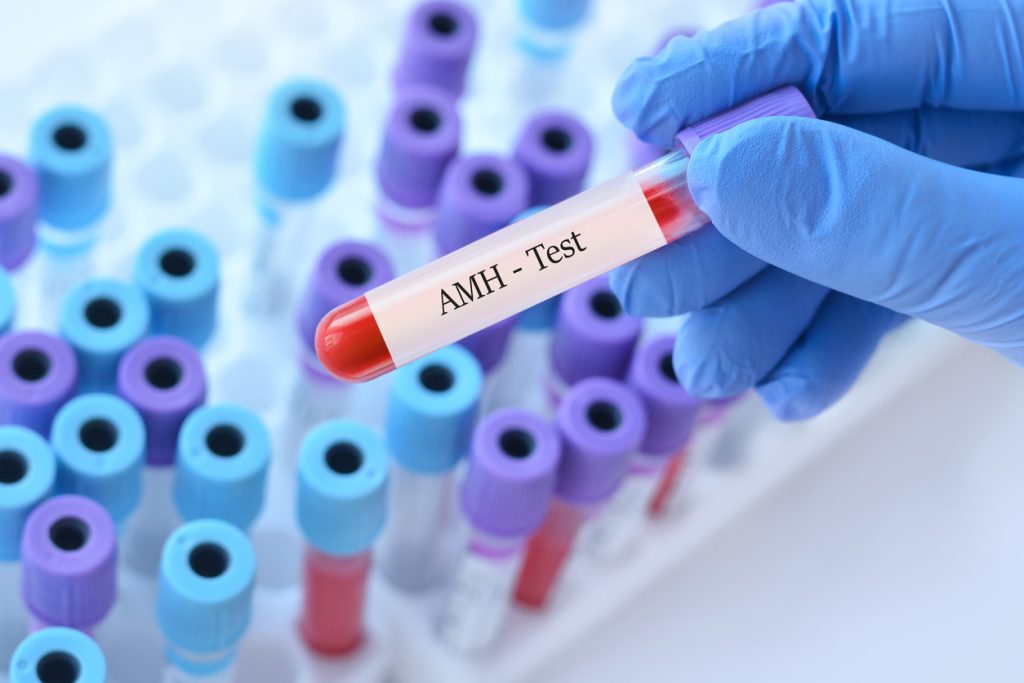AMH (Anti-Mullerian hormone) is a hormone that is produced, naturally, in cells of developing ovarian egg sacs or follicles. AMH levels provide insights into the quantity of a woman’s egg supply. Higher AMH levels generally indicate a larger pool of eggs, while lower levels suggest diminishing ovarian reserve. Evaluating the level of AMH present in a woman’s blood can help to predict a woman’s ovarian reserve and the number of eggs retrievable if IVF or egg freezing is pursued.
It’s essential to note that AMH alone does not paint the complete picture; it should be interpreted in conjunction with other fertility factors. It is important to keep in mind that AMH does not predict spontaneous pregnancy rates. The significance of AMH lies in its ability to guide fertility specialists in developing personalized treatment plans. For instance, women with higher AMH levels may be at risk of ovarian hyperstimulation syndrome (OHSS) during in vitro fertilization (IVF) cycles, which requires adjustments to medication. Conversely, those with lower AMH levels may require more intensive protocols to optimize their chances of success.
AMH levels can also be used to help diagnose polycystic ovary syndrome (PCOS). PCOS is one of the most common causes of infertility. PCOS is characterized by the presence of a larger number of small ovarian follicles; thus, leading to high AMH levels.
What is a “Normal” AMH Level?
The definition of “normal” ranges for AMH are not yet fully clarified or agreed upon by experts.
Fertility specialists evaluate a patient’s AMH level by comparing their age and a percentile bracket. For example, a value of 2.0 ng/mL is about the 50th percentile for a woman aged 39 which would be considered “normal”. For a 26-year-old woman, that same value of 2.0 ng/mL is only the 10th percentile and is likely an indicator of early onset diminished ovarian reserve (DOR). Several studies have been completed and the below table shows an AMH guideline with 50th percentile values derived from the available literature to help provide some reference ranges based on age.
Age Bracket AMH(ng/mL)
≤ 20 8.0
21-33 7.0
24-26 6.0
27-29 5.0
30-32 4.0
33-35 3.5
36-38 2.5
39-41 1.5
42-44 0.7
While AMH levels can influence treatment success rates, they don’t guarantee a specific outcome. Other factors, such as age, overall health, and the cause of infertility also play crucial roles. However, understanding AMH levels is one important component to your fertility journey.
For more information about advanced fertility testing, contact MCRM Fertility to discuss resources and the latest assisted reproductive techniques, or visit MCRMfertility.com. With perseverance and the right help, parenthood is possible! Make a consultation appointment today with an MCRM Fertility Specialist in St. Louis MO, or Tulsa, OK.

